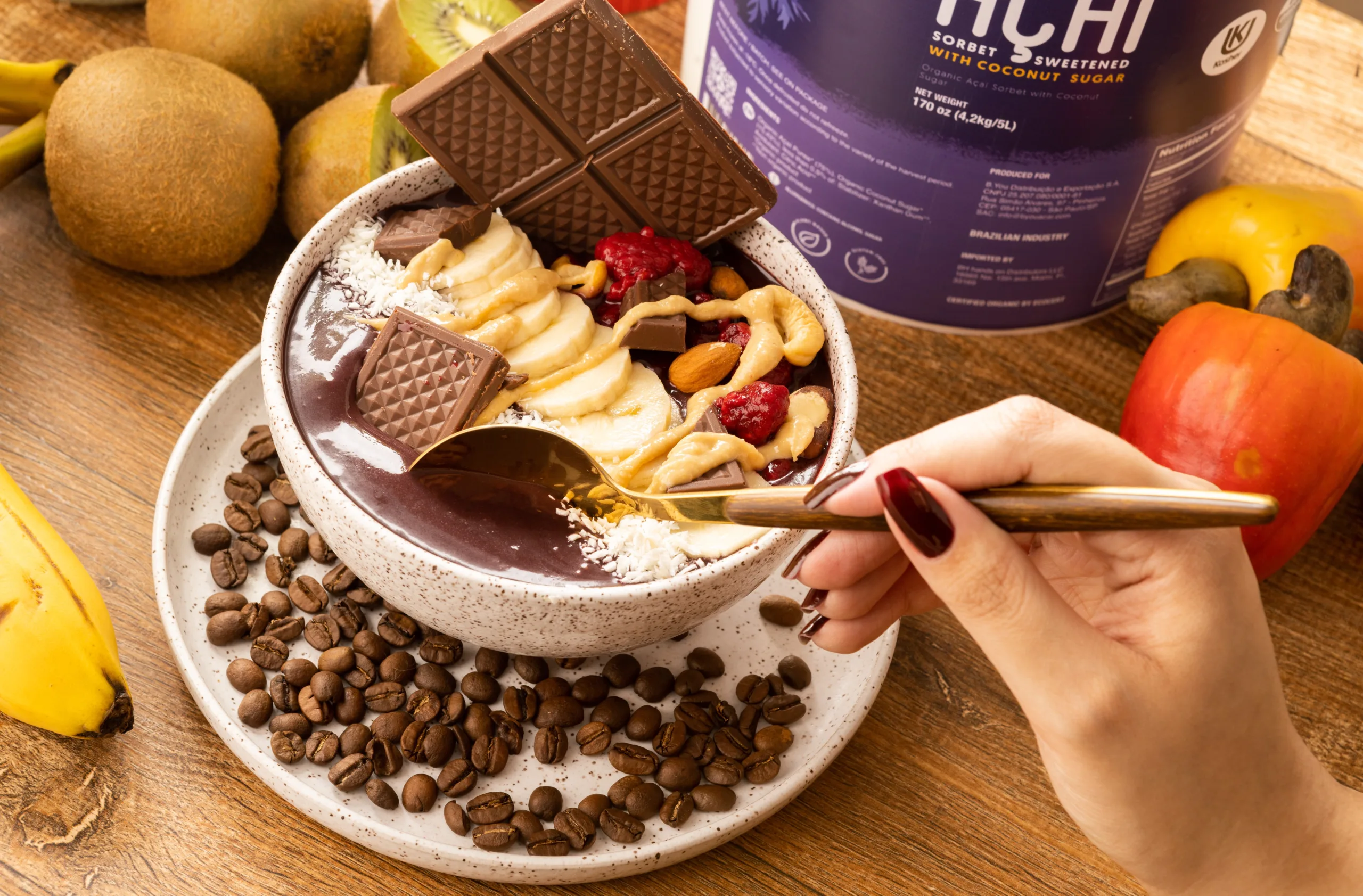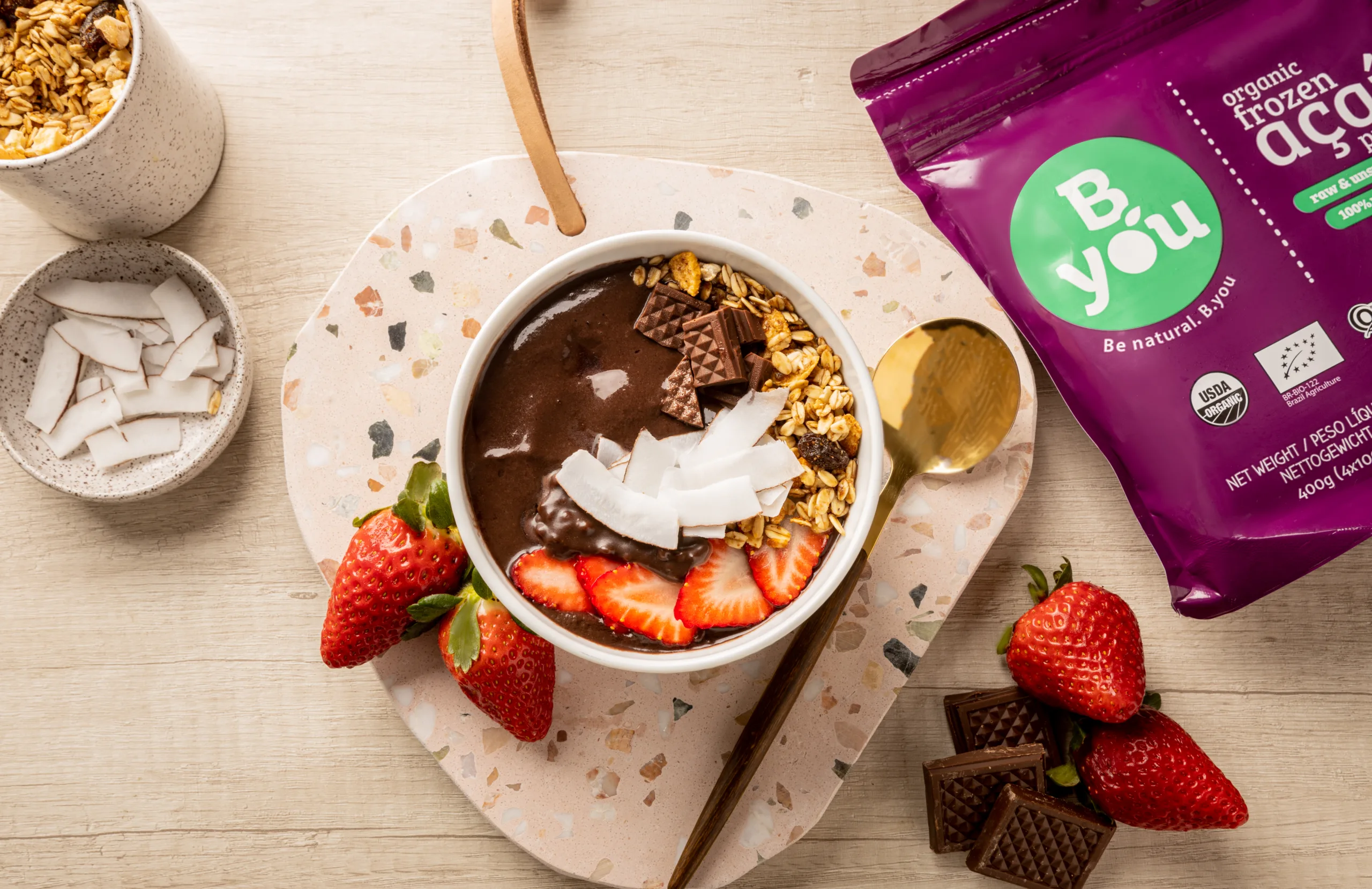For centuries, açaí was a staple food in the Amazon region, consumed daily by local communities for its energy and nutritional value. But it wasn’t until the early 2000s that açaí crossed borders and gained international recognition as a superfood, reshaping how the world thinks about healthy eating.
From the Amazon to the World
Traditionally prepared as a thick, earthy pulp, açaí was deeply rooted in Amazonian diets. Its transition into the global market began when entrepreneurs and health advocates introduced it to North America, positioning it not just as a fruit but as a functional food rich in antioxidants, fiber, and omegas.
The turning point came with the rise of the açaí bowl in California and Hawaii. Combining frozen açaí pulp with granola, fruit, and nut butters, the bowl became a symbol of the wellness lifestyle, colorful, nutritious, and Instagram-worthy. From there, it spread to Europe, Australia, and Asia, riding the wave of the global “superfood” trend.
The Modern History of the Açaí Bowl
The story of açaí’s rise as a superfood is tied not only to its nutritional qualities but also to cultural movements that spread far beyond the Amazon.
- 1970s: Frozen açaí pulp began reaching northern Brazilian cities, moving beyond its forest origins.
- 1980s: Legendary Brazilian Jiu-Jitsu master Carlos Gracie introduced açaí bowls (pulp blended with banana) to his fighters as part of the “Gracie Diet.” This connection with performance and vitality helped açaí gain prestige in Rio de Janeiro’s fitness culture.
- 1990s: Surfers and athletes embraced açaí as a natural, energizing snack.
- 2000s: Açaí pulp made its way to the U.S., with Hawaii and Southern California becoming the first international hotspots for açaí bowls. The combination of surf culture, health consciousness, and a visually appealing dish fueled its rapid growth.
By the 2010s, the açaí bowl had cemented itself as a global wellness icon and perfectly aligned with the superfood movement.
From Trend to Global Superfood
Today, açaí superfood is no longer just a niche trend; it represents a consumer demand for foods that are:
- Functional: packed with antioxidants, omegas, and fiber.
- Sustainable: tied to biodiversity and fair sourcing.
- Experiential: visually striking and versatile in menus.
This combination explains why açaí is thriving not only in retail but also across the foodservice industry, from smoothie bars to fine dining and even mixology.
Why the Market Still Grows
The rise of açai superfood reflects broader consumer trends: a demand for natural, functional, and sustainable ingredients. Açaí checks all these boxes, offering both nutritional benefits and a strong story of origin tied to biodiversity and sustainability.
For businesses, particularly in foodservice, investing in premium açaí products means tapping into this demand. Restaurants, cafes, hotels, and even mixology concepts are expanding their menus with açaí-based options, aligning with consumer expectations for health-driven, high-value foods.
The B2B Opportunity with Premium Açaí
As the market matures, the focus is shifting from simply offering açaí to ensuring quality, consistency, and certifications. This is where premium suppliers make a difference: helping businesses deliver authentic experiences while meeting international standards.
Partner with B.You Superfoods and discover how certified, organic, and sustainable açaí can elevate your business in today’s competitive foodservice market.










